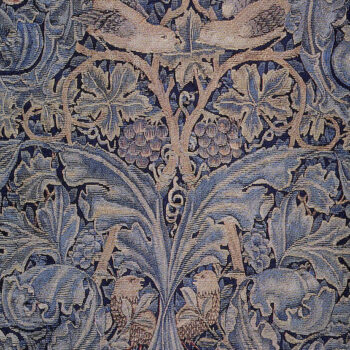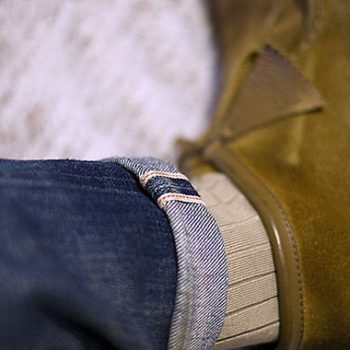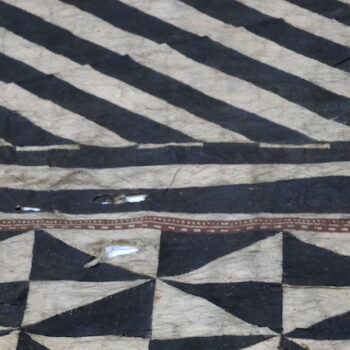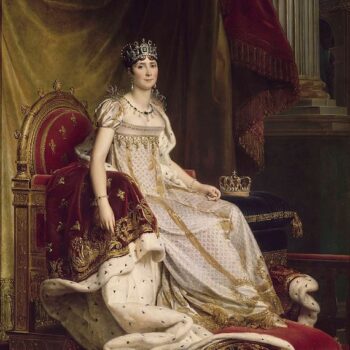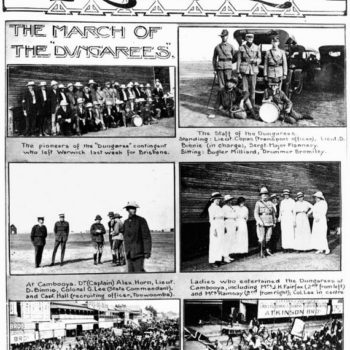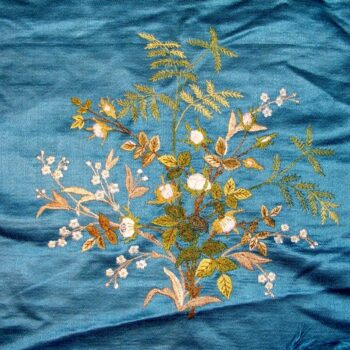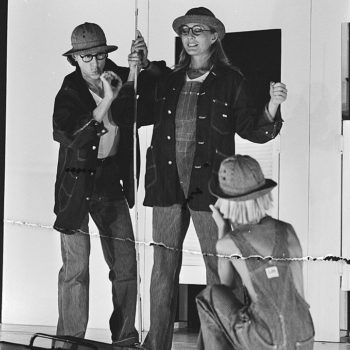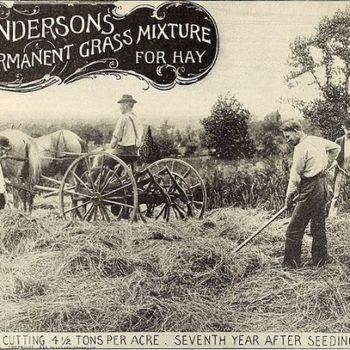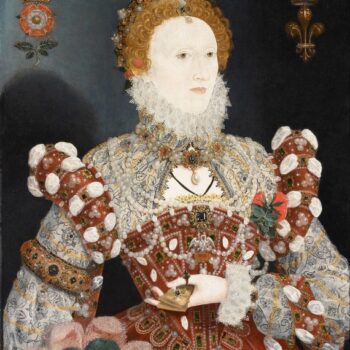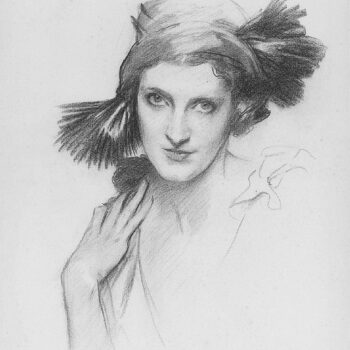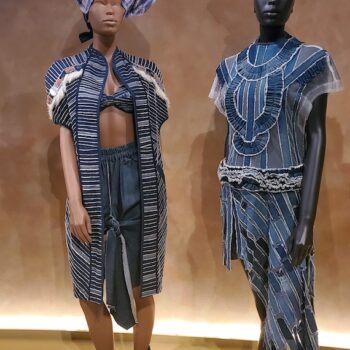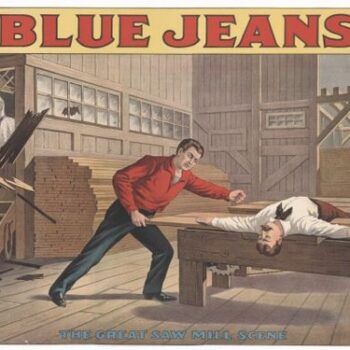Weaving and the Greek Myths
July 23, 2022Weaving is one of the very oldest of human crafts, and perhaps one of the most important. Keeping warm means keeping alive. Today, when we can buy clothes for a couple of quid and throw them away again if we like, it’s hard to picture how precious clothing used to be. It used to be treasured in part because of the extremely laborious process of spinning and weaving cloth. Once you’ve made a garment with your own hands (or seen someone else do it) you would definitely be repairing the heck out of it if it got a little worn. There’s no way you’d think it was quicker or more cost-effective to just get another one.
Because weaving was so essential and so precious, it was held in great regard and came to be a high art, too. Adding colour and patterns to the cloth took skill. It’s natural that there were goddesses in charge of weaving in ancient societies. They could be just as jealous, cunning and proud over their craft as any god of war. I should warn you here, these stories are gory.
Athena, Goddess of War and Weaving (and a few other things)
Take Athena. She actually is the Ancient Greek goddess of war, along with wisdom, peace and handicrafts. All of these things were on a par. She spun and wove her own majestic robes, and was considered the best-dressed because of this. After all, nobody could make cloth better than the actual goddess of cloth-making, right? Or at least, nobody is going to tell her so.
Except Arachne. Arachne was a master craftsperson, and wove the most beautiful tapestries. The scenes on them were so lifelike, they looked as if they were about to move. Everybody said she must have been trained by the goddess herself. But she denied it, and said it was just her own natural talent. She got really fed up of hearing Athena’s praises sung, and one day she said, well, I am just as good as Athena. In fact, I’m better, and could win any competition with her. And though she didn’t actually say this directly to the goddess, we all know that they can hear everything. So she flew down and was furious.
The Competition…
A weave-off was announced. Athena made a huge tapestry showing stories of the gods and their triumphs. She was right in the centre winning another competition – the day she became the patron of the great city that bears her name, Athens. Poseidon, king of the sea, offered its king a spring of salt water. She gave him an olive tree, whose liquid gold in the form of olive oil has brought the city great wealth. The border of the the tapestry was olive leaves, gleaming in the sunlight. In each corner was a story of other gods and their victories.
Meanwhile Arachne wove a tapestry showing the god’s crimes (which are many, often the same as their victories). She was making a point – but quite a brave one right in front of the goddess. Athena tore the accusing tapestry off the loom, ripped it to shreds, smacked Arachne over the head with her own shuttle and turned her into a spider. It was totally irrelevant how good each tapestry was – the point was that Athena would always win anyway. Arachne’s consolation prize was that she continued to weave, using the shining thread from her own body, right up until today.
Athena is also said to have invented war chariots and war ships, combining her two favourite interests by directing craftsmen to “weave” or “plait” wood together to make their structures.
Weaving and Revenge
As well as this, there is the story of Clytemnestra, the wife of the warrior Agamemnon. He had been away for ten years fighting the Trojan War, a conflict allegedly started to rescue Helen of Troy, who had run off with Paris, a prince of Troy. To get things started, Agamennon had sacrificed his and Clytemnestra’s daughter, Iphegenia. Which was as much a surprise to the mother as to the poor daughter.
Clytemnestra prepared for his return by weaving a huge crimson (or purple) welcome carpet. This has obvious parallels with rivers of blood. It is a very, very expensive pigment, because it made of thousands of tiny sea creatures, laboriously gathered and prepared. She forced him to walk on it, despite his protestations about treading on the costly fabric. Once inside the house she drew him a bath, helped him in, and then threw a net over him to immobilise him, before killing him with a sword.
Weaving to Delay

Penelope and her Suitors, by John William Waterhouse. She is at her loom, weaving. Image via Wikipedia.
Penelope’s husband, Odysseus, was also away for ten years at Troy, and then spent ten more years adventuring, I mean, trying to get home. This is detailed in the Odyssey. Obviously, after all this time, people began to suspect he was dead. Penelope, as a presumed wealthy widow, was inundated by suitors. She told them she would marry when she had finished weaving her father-in-law’s shroud (he was still alive). They must have thought this was some marvellous creation, since she would work on it in the daytime, then secretly unravel it at night. Then start all over again the next day. In this way she fended them off until Odysseus returned. And promptly killed all the suitors, plus the serving girls who had been sleeping with them. Which seems a bit unfair.
Transformed into a Nightingale
And finally there is the grisly story of Philomela, kidnapped and raped by her brother in law and kept prisoner in a house in the forest. He cut out her tongue to stop her from telling the servants what he had done, but she wove her story on a tapestry and was rescued. Sort of. When Philomela’s sister, Procne, found out what her husband Tereus had done, she killed their baby son and cooked and served him to Tereus, who ate him unknowingly. He then killed the sisters in turn. Procne became a swallow, and Philomela became a nightingale, with a mournful, beautiful song. The sisters flew away into the forest, and freedom.
These are all some of the mentions in the Greek Myths, and there are probably more. Other cultures, like the Mayans, Slavs, Norse and Egyptians have weaving goddesses, too, and that’s something I’m going to explore next time, along with the work of some of our more modern weavers like Annie Albers, Sophie Tauber-Arp, and students of the Bauhaus school.




